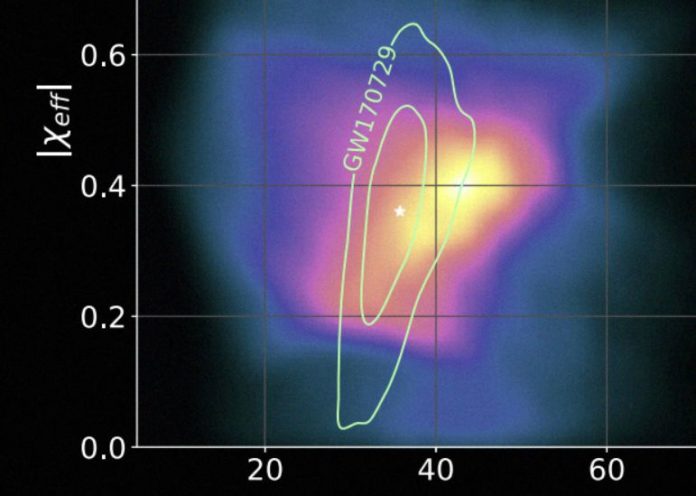Numerical modelling confirmed the realism of the mechanism of accelerated growth of black holes in stellar mass, which is associated with the influence of supermassive black holes. According to this theory, small black holes accumulate in the centres of active galaxies, where they are likely to merge with each other, and this process can be repeated many times. As a result, objects that weigh more than 50 times and more in solar mass may appear, and gravitational waves from the merger of which are already observed, but no convincing mechanism of formation has been proposed.
Black holes can theoretically have mass in a very wide range, but according to modern ideas in the universe most of the black holes of stellar masses, which heavier than the Sun up to a few dozen times. However, it is believed that black holes heavier than about 40 solar masses should not occur during supernova explosions, as stars with more massive cores should finish life in the form of a paired-unstable supernova, as a result of which there is no black hole left.
However, data from the GRAVITATIONAL antennas of LIGO and Virgo indicate the existence of more massive black holes. For example, the estimated mass of a larger object in the confluence of GW170729 is approximately 50 solar masses. It turns out that either modern models of stellar evolution need to be significantly adjusted, or there is an effective mechanism for the growth of black holes that allows them to additionally gain dozens of solar masses for a limited time.
In 2016, astrophysicists suggested a possible way to grow by merging small black holes in orbit around a supermassive black hole at the centre of the active Galaxy. To maintain the activity of the nucleus of the galaxy on the central object must constantly fall out a substance that moves in a spiral, forming an accretion disk. According to various estimates, tens of thousands of black holes of stellar masses should also be involved in this movement.
The calculations of physicists have shown that taking into account various effects, such as gravity and friction against gas, should lead to the migration of small black holes that have fallen into this region into orbits with a semi-axis of the order of 300 radii of the central hole. Such a “migration trap” should increase the likelihood of a merger, but there are no such calculations in this work.
Astrophysicists from Hungary, India and the USA, with the participation of Imre Bartos from the University of Florida, decided to study in detail the previously announced concept using computer simulation. The authors used the Monte Carlo method to simulate various disks of active galaxies in which a different number of objects were created. Over time, black holes entered “trap” orbits, where they merged with a high probability with the following falling into the same region. The hole resulting from the merger remained in the same orbit and grew more and more from each new object.
The authors estimated the probabilities of the final masses of black holes and concluded that 50 solar masses are routinely reproduced in their model, and the heaviest samples grew up to 80 solar masses. They also came to the conclusion that the vector of proper rotation of the resulting black holes is directed in the opposite direction relative to the vector of the orbital momentum. This situation is unusual and not predicted in other proposed mechanisms for the formation of such objects.
More detailed data on gravitational waves, which scientists expect to receive in the coming years, will be sensitive enough to calculate the magnitude and direction of spins black holes before merging. Thus, if it turns out that the moments of intrinsic and orbital motion are opposite for the most massive merging pairs, this will confirm the proposed model.
